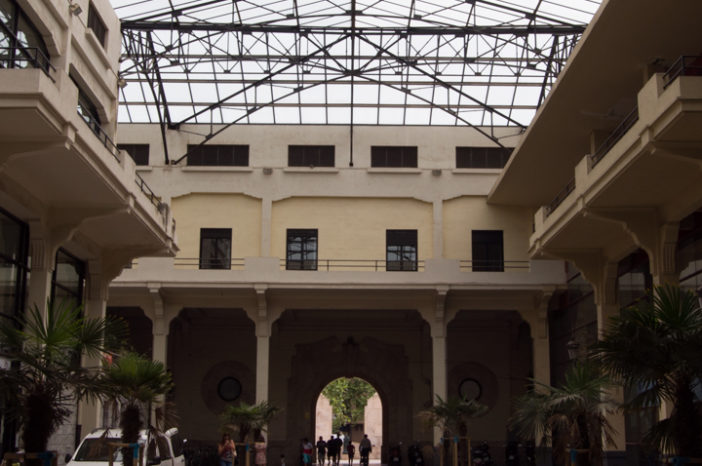Old Abastos Market
The Old Abastos Market was built, at the request of the mayor of the city, Baron de Cárcer, as a wholesale market for wholesalers in the province and other parts of the territory. At the time it was considered the best in Spain and one of the most important in Europe. Designed by the architect Javier Goerlich Lleó based on functionalist criteria, the works began on December 1, 1940 and, after several interruptions, ended on June 28, 1948.
The facilities occupy two blocks of the 1912 expansion, a rectangle of approximately 225 x 105 meters, where the building itself is inserted, 190 x 70 meters. Functional and simple in style, adapted to the use for which it was conceived, it includes in its composition ornamental motifs of local modernism that are manifested in details such as stained glass, shields, stone modillions, etc. The enclosure is enclosed with a powerful fence with limestone pilasters on a leveling plinth that is mainly manifested in its SW access.
Inside, the market is organized in a double symmetry, the main axis being the NE-SO, perpendicular to the longest side of the island. In this are located the two administration and services buildings that serve as access, with imposing stone doorway, indicating the institutional character of the enclosure. The interior was organized in two streets 10 meters wide, parallel to the longest side of the block, from which the sales warehouses were organized. It came to have 96 stalls and 500 stalls for farmers in the area. The interior space is imposing, characterized by its great height and length and the impressive seriation of the reinforced concrete porticos, where huge corbel beams solve the large eaves and overhangs that appear both outside and inside. The roof is resolved with a multi-sloped roof on metal belts. Once the supplies were transferred to the current Mercavalencia industrial estate, the building was practically in disuse for a long time.
In 1991 it underwent an important transformation, becoming a huge container that currently houses two buildings: a sports and cultural complex and an institute, organized around In a large central hall, located on the main axis of the building, where the original roof is replaced by a skylight and the initial longitudinal direction of circulations disappears completely.

Dades bàsiques
Calle Alberique, 18
46008 Valencia